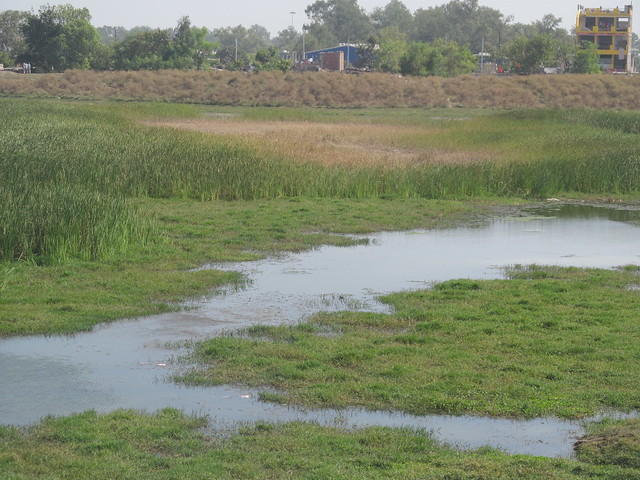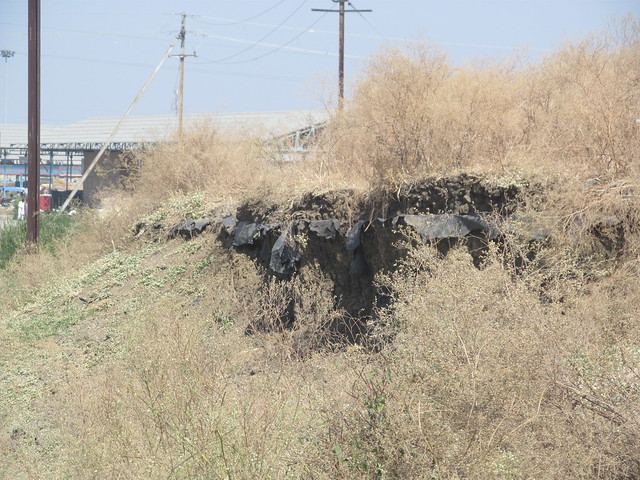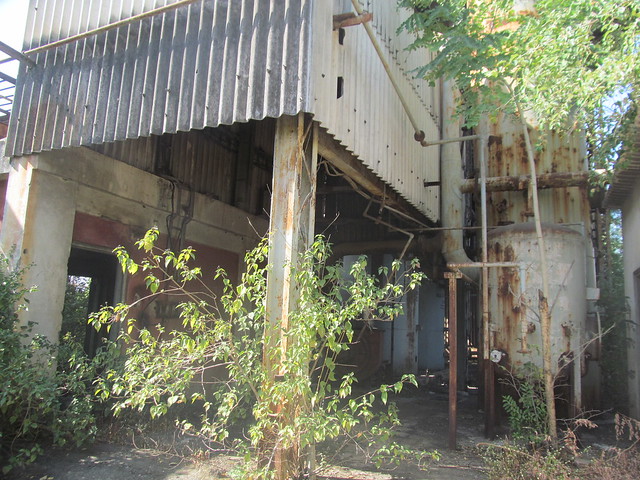It has been labeled as the world’s worst industrial disaster. Thirty years ago, on December 2-3 night, a cloud of deadly methyl-isocyanate enveloped the sleeping innocents in the neighbourhood of the Union Carbide plant that killed at least 3000 immediately and left thousands others suffering a lingering death. Even after three decades of struggle, justice remains a distant cry.
In the sixth of the six part series, TwiCircles.net finds how the site of the Union Carbide plant still continues to pose danger due to its high level toxic contents
Read Part 1 here: “It was difficult for mothers to save their children, for children to save their aged parents”
Read Part 2 here: Widows of tragedy an icon of government’s apathy
Read Part 3 here: Abdul Jabbar: an underrated champion
Read Part 4 here: In quest of justice, women are leaders not pleaders
Read Part 5 here: New age activism keeps the flame burning for Bhopal gas tragedy victims

By Mohd Ismail Khan, TwoCircles.net,
Bhopal: Thirty years after the world’s worst industrial disaster, the site which produced the devil is still a bone of contention. Several environmentalist and local activist claim that dwellings around the Union Carbide plant have suffered due to severe toxic contamination because of the tonnes of toxic waste still lying around the plant.
The toxic waste remnants – neither treated nor removed – are affecting the soil and water of the area. “Hundreds and thousands of slum dwellers eat, drink and breathe Union Carbide even today but are scared to even pass anywhere near the site”, says Shamshad Bi, a local activist from JP Nagar, the worst effected slum adjacent to the now defunct and abandoned chemical fertilizer plant. Her sarcasm trying to portray the ignorance of her local community was not lost.
It was this same Union Carbide fertilizer plant, which spew venom by way of the highly toxic methyl isocynate (MIC) gas on the intervening night of December 2-3, 1984 resulting into at least 3,000 deaths instantly, a figure contested by activists. It left thousands other suffering a lingering death over the years and several other victims injured and maimed, with many suffering lung cancer, kidney and liver failure and eye disorders after coming in contact with the MIC gas.
Apart from the 45 tonnes of MIC that leaked and killed thousands, the toxic waste dumped by the factory since 15 years before the disaster continues to affect the surroundings even today.

After its establishment in 1969, the Union Carbide plant dug 30 acre artificial pond for disposing toxic effluent waste from the plant. Over the years, it is estimated that 2,000 truck load of toxic waste was dumped in this artificial pond. After continuous water evaporation, what is left now – some environmentalist suggest – is approximately 18,000 tonnes of dangerous chemical contaminated waste.
Locals have aptly named it as ‘Zehrila Talab’ (Poisonous Pond). Unfortunately, even with such a name, the now empty-due-to-evaporation toxic pond is fast turning into a construction boom site. More dangerously, at time, children from the surrounding slums play and build sand castles from the toxic soil.
Government failure to acknowledge and take action
Government never acknowledged the fact that toxic waste remnants are affecting the soil and water of the area until activists from Bhopal Group of Information and Action (BGIA) sent the soil and water samples to a Boston-based laboratory (USA) for examination. It confirmed what activists always feared: the soil and the ground water were indeed contaminated with high level dangerous toxics.

After this report, the state government finally woke up and grudgingly acknowledged the danger. It soon sealed all the ground water hand pumps in the adjacent localities and started providing piped water.
In 2005, after a Jabalpur High Court order, the government announced first initiative to dispose 385 tonnes of toxic waste but it went to further court litigations as no state or a locality was willing to accept the toxic waste disposed in their neighbourhood. Plans of disposing of 385 tonnes toxics are stalled for nine years, prompting the locals to mock the government about 18,000 tonnes of total toxic waste.
Abdul Jabbar, a veteran activist who has worked extensively for Bhopal gas victims said, “The new management of Dow Chemical Company, which has taken over carbide should be made responsible to clear that waste. It is very shameful that we allowed them to leave even when there still is contamination in eight kilometer radius of the factory.”
Dr D K Satpathy, former director of Medico Legal Institute of Bhopal, says, “There are high chances of poisonous substances from the leakage site or from its toxic dumping ground contaminating the soil and also making way into the groundwater.”
Immediately after the gas disaster, the Indian Council of Medical Research (ICMR) took cognizance of the matter and allotted 25 area wise projects to study the long term effects of contamination. “But surprisingly, after five years, all the projects were closed,” Dr Satpathy said.

Principal secretary, Gas Relief and Rehabilitation Department, government of Madhya Pradesh, told one of the newspapers here: “We have identified an agency for the purpose (of removal/treatment of toxic waste). But unless the 346 MT of packed toxic waste is first disposed, we cannot make a forward movement.”
Rachna Dhingra of BGIA commented, “The issue of contamination is on different pitch from disaster. There should be a concentrated effort for removal of toxic waste. But Gas relief department doesn’t acknowledge the problem. They don’t admit the long term effects it is having on the second and third generation of victims.”
Thirty years later, the Madhya Pradesh government’s Gas Relief and Rehabilitation Department is still temporary in nature, she points out and says, “It shows how that the government feels that this problem is temporary and will go away one day.”
“Maybe, they are just waiting for everyone to die.”
Union Carbide plant: symbol of a catastrophe and corporate greed

The rusted factory site has eight member police team to guard it 24X7. Insides, the 24-acre factory land now looks more of an urban jungle complete with snakes and wild dogs with a ghostly structure dilapidating in its own grief.
Even as the police stand guard near the main entrance, there are other unofficial entrances that have come up over the years to sneak into the plant. Locals claim, even after security deployment criminal activities go on inside the plant, giving one more reason for locals to be away from it.

One of the security personnel, who did not want to be named, said: “This plant has become a rendezvous for all the anti-social elements, from robbers to murderers to even ‘powder chap’ (drug addicts). All come here as they think no one will dare come inside searching for them.”
The irony is that the Carbide factory site which is nothing but a symbol of a catastrophe and corporate greed gets 24×7 security while the site – especially the pond and the dumping site – which still endures the legacy of that catastrophe in the form of toxic waste doesn’t even have a single barricade or even a warning board.
Slideshow:
Related:
Bhopal – Three decades of Struggle

